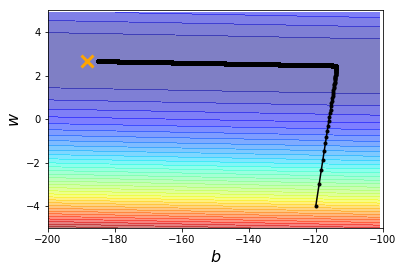Regression 回归
应用领域包括:Stock Market Forecast, Self-driving car, Recommondation,...
Step 1: Model
对于宝可梦的CP值预测问题,假设为一个最简单的线性模型
y = b + (sum w_i x_i)
(x_i): an attribute of input x(feature)
(w_i): weight, b: bias
Step 2: Goodness of Function
定义一个Loss Function来评价Function的好坏,
(input: a function, output: how bad it is, L(f) = L(w, b) )
若采用方差来评估,则 L(w, b) = (sum_{n=1}^{10}(hat{y}^n-(b+{w·x_{cp}}^n))^{2})
(其中,(hat{y}): 表示正确的,实际观测到的结果)
Step 3: Pick the Best Function
最好的函数就是使L(f)最小的函数,f* = arg (min_f)L(f)
w*, b* = arg (min_{w,b})L(w, b) = arg (min_{w, b})(sum_{n=1}^{10}(hat{y}^n-(b+{w·x_{cp}}^n))^{2})
如何计算呢?用的就是梯度下降法,Gradient Descent,
如果只考虑 w 一个变量:
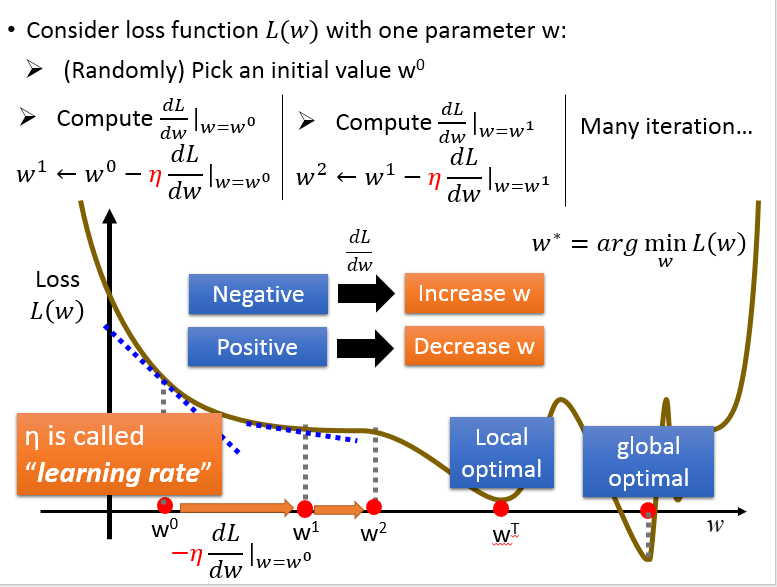
同时考虑 w, b 两个变量:

因为线性回归的损失函数总是一个凸函数,所以不用考虑局部最小,得到的就是全局最小。
对损失函数求导得到:
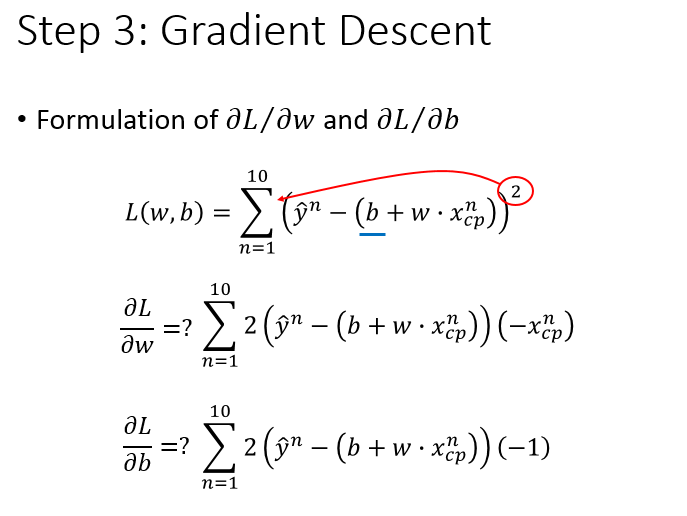
根据泰勒公式,考虑更多的项,得到如下的结果:(加了高次项依然是linear model,因为(x_{cp})不是参数)
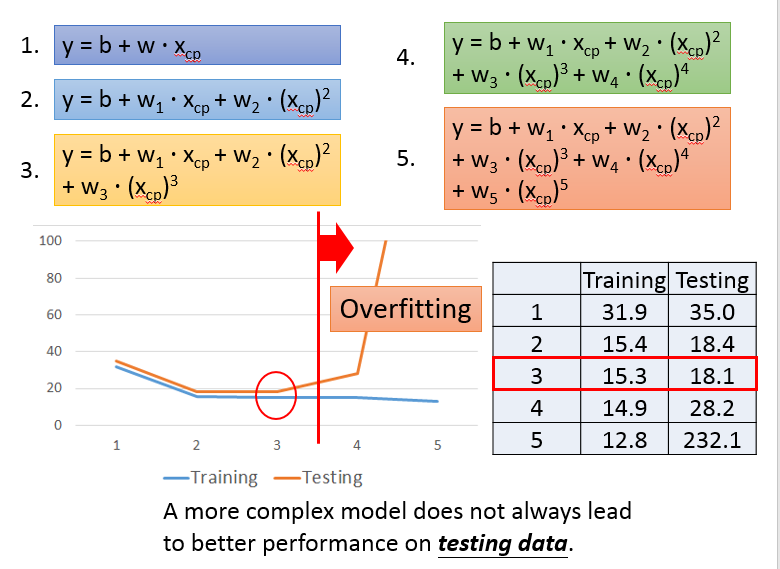
当收集到更多的数据后,会发现可能还有其他未考虑的因素,
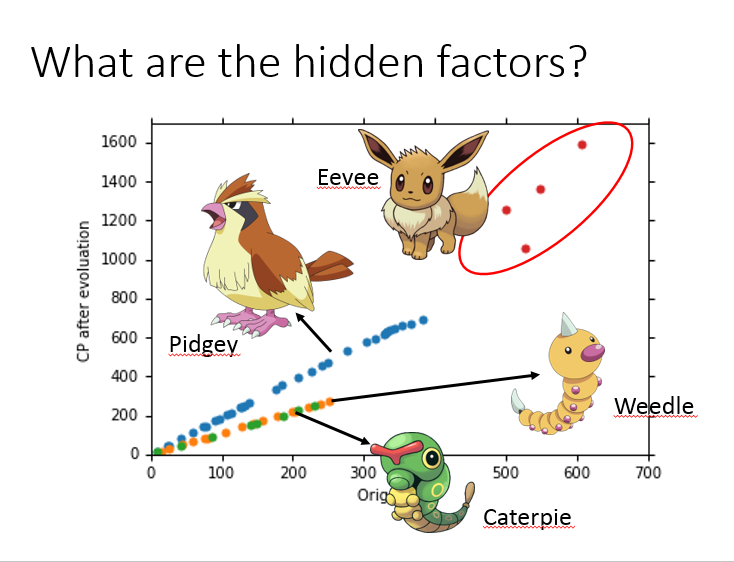
可以对模型修正为,y = (delta(x_s)·(b + sum w_i x_i)),其中 (delta(x_s)) 的取值是二元的。
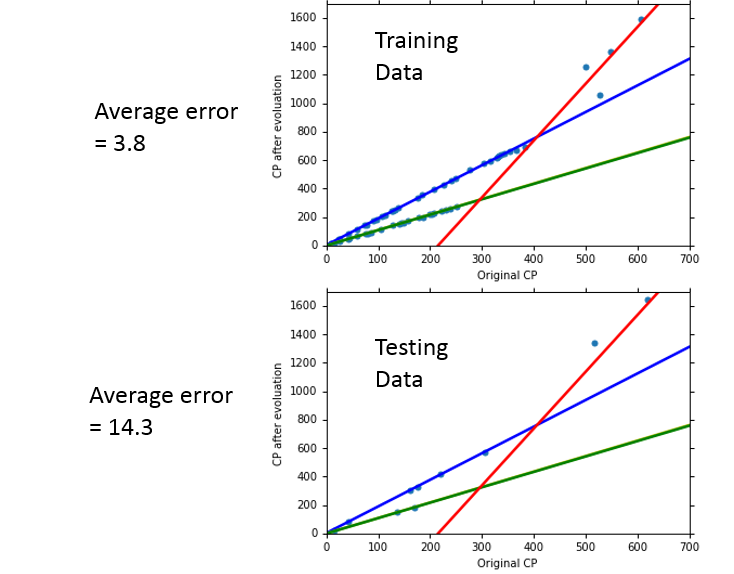
可以看到拟合的效果更好了,但是如果考虑的因素过多,则可能也会出现 Overfitting 的问题。
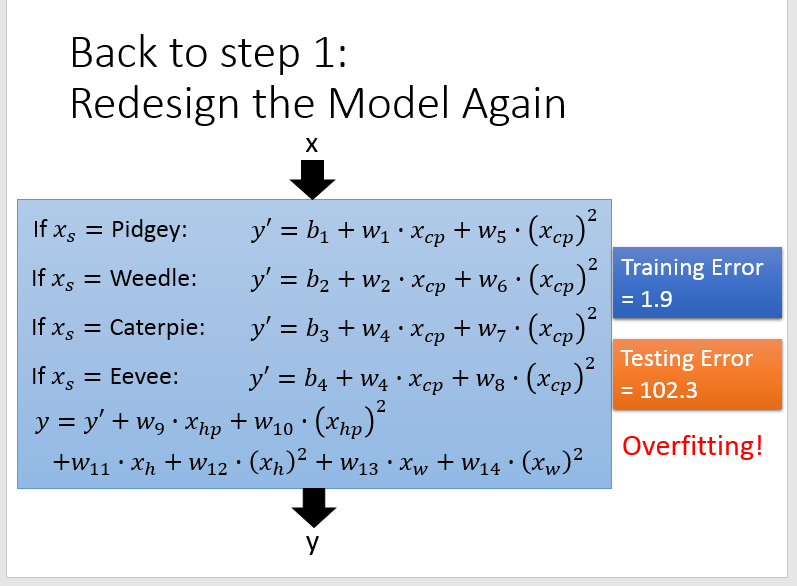
最后,还需要对损失函数做正则化操作,以使其在测试数据上表现更好。
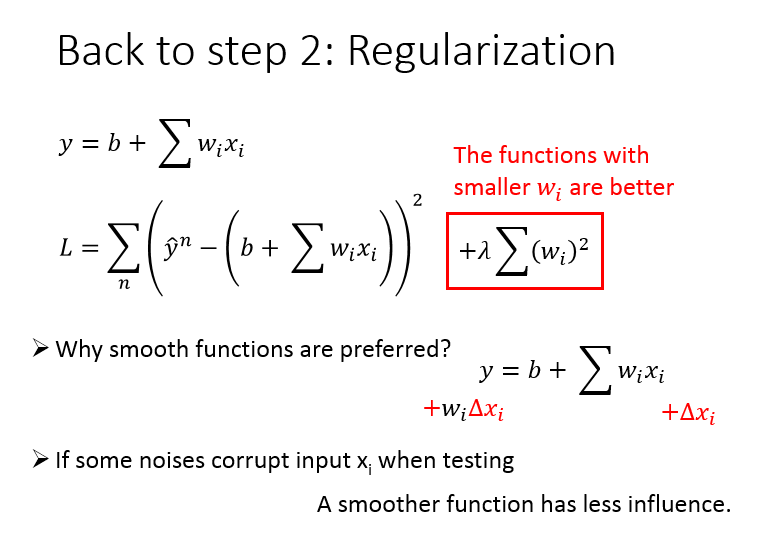
调参数 (lambda),(lambda) 越大,曲线越平滑,对noise不那么敏感。
但是 (lambda) 本质上是惩罚项,惩罚项太大,会使得参数空间变小,最后的结果也不会很好。
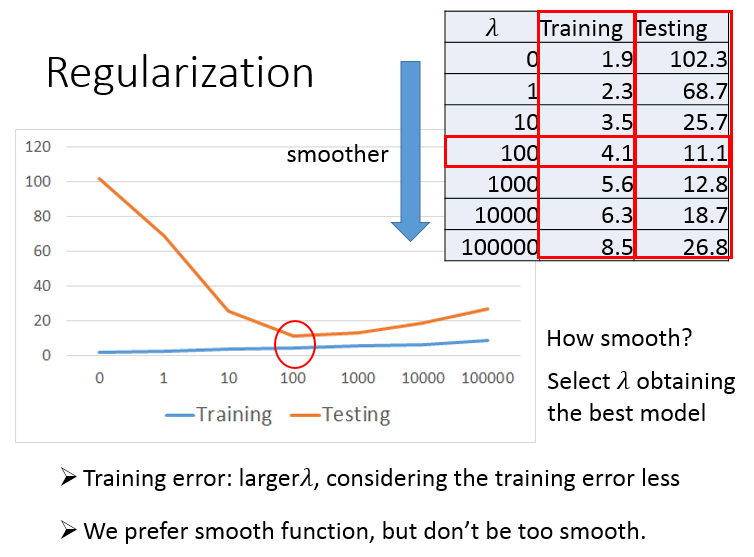
Demo程序:
import numpy as np
import matplotlib.pyplot as plt
from tqdm import tqdm_notebook
y_data, x_data -> (hat{y}) 和 (x_{cp}) 值向量
x_data = [338.,333.,328.,207.,226.,25.,170.,60.,208.,606.]
y_data = [640.,633.,619.,393.,428.,27.,193.,66.,226.,1591.]
# ydata = b + w * xdata
x, y -> bias, weight
x = np.arange(-200, -100, 1)
y = np.arange(-5, 5, 0.1)
X, Y = np.meshgrid(x, y)
z -> L(w, b)
z = np.zeros((len(x), len(y)))
for i in range(len(x)):
for j in range(len(y)):
b = x[i]
w = y[j]
z[j][i] = 0
for n in range(len(x_data)):
z[j][i] = z[j][i] + (y_data[n] - b - w*x_data[n])**2
z[j][i] = z[j][i] / len(x_data)
b = -120 # initial b
w = -4 # initial w
lr = 1 # learning rate
iteration = 1000000
# store initial value for plotting
b_history = [b]
w_history = [w]
lr_b = 0
lr_w = 0
# iteration
for i in tqdm_notebook(range(iteration)):
b_grad = 0.0
w_grad = 0.0
for n in range(len(x_data)):
b_grad = b_grad - 2.0*(y_data[n] - b - w*x_data[n])*1.0
w_grad = w_grad - 2.0*(y_data[n] - b - w*x_data[n])*x_data[n]
# AdaGrad
lr_b = lr_b + b_grad ** 2
lr_w = lr_w + w_grad ** 2
# update parameters
b = b - lr/np.sqrt(lr_b) * b_grad
w = w - lr/np.sqrt(lr_w) * w_grad
# b = b - lr*b_grad
# w = w - lr*w_grad
# store parameters for plotting
b_history.append(b)
w_history.append(w)
# plot the figure
plt.contourf(x, y, z, 50, alpha=0.5, cmap=plt.get_cmap('jet'))
plt.plot([-188.4], [2.67], 'x', ms=12, markeredgewidth=3, color='orange')
plt.plot(b_history, w_history, 'o-', ms=3, lw=1.5, color='black')
plt.xlim(-200, -100)
plt.ylim(-5, 5)
plt.xlabel(r'$b$', fontsize=16)
plt.ylabel(r'$w$', fontsize=16)
plt.show()
